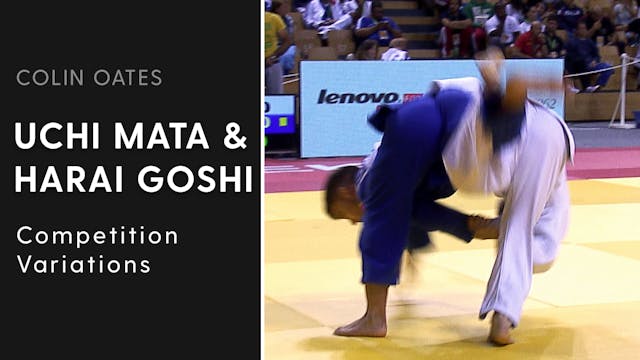Colin Oates has a variation of Uchi mata that he uses when his left sleeve is being pinned. It works on the same principle as the Korean off the sleeve Tai otoshi, where you lure the opponent into the throw by pretending to break off their sleeve grip.
Here, the opponent prevents Oates from taking a high and dominant grip, pinning his sleeve down.
In this scenario, both Oates and the partner each have a strong sleeve grip, but with Oates’s power hand – the left hand - pinned.
Oates lays the trap, by pretending to break his partner’s sleeve grip.
With his opponent wanting to keep hold, Oates turns his body into the direction for Uchi mata, exploiting the forward momentum that has been generated.
If, however, the partner does let go, Oates is in his perfect attacking position, with a strong sleeve grip and a high arm over the back.
From here, he can launch any number of his big throws.
But, if the partner wants to keep hold of the sleeve, Oates uses that desire and momentum that they create, to turn in with Uchi mata.
It’s this tension on the sleeve, created by the partner, that shifts their bodyweight forwards and into a position where they are unable to prevent the throw.
And so here it is when it all comes together…
A great example of turning a potentially bad situation into an attack and a score.
Up Next in Watch All
-
Competition Variations | Uchi Mata & ...
In this clip we look at the competition variations of Colin Oates’s Harai goshi and Uchi mata.
On his way to a 5th place at the 2011 World Championships, Colin Oates scores Yuko from an Uchi mata – Ashi guruma hybrid technique, against Moldova’s Soroca.
With a sleeve and back grip Oates uses th...

